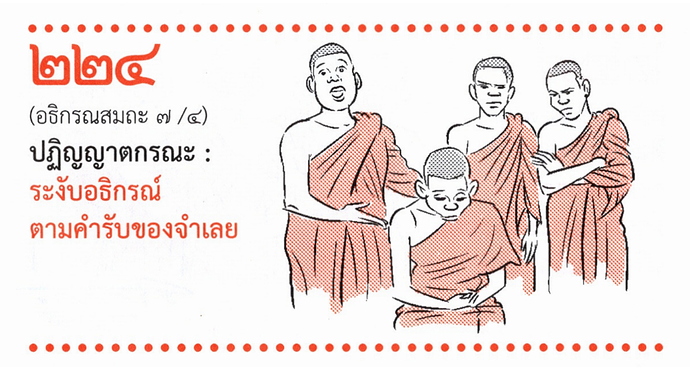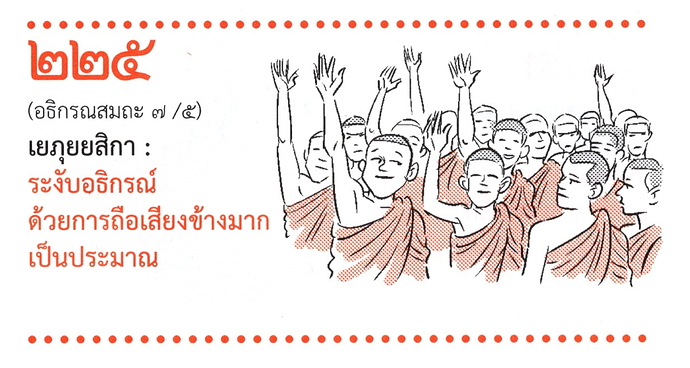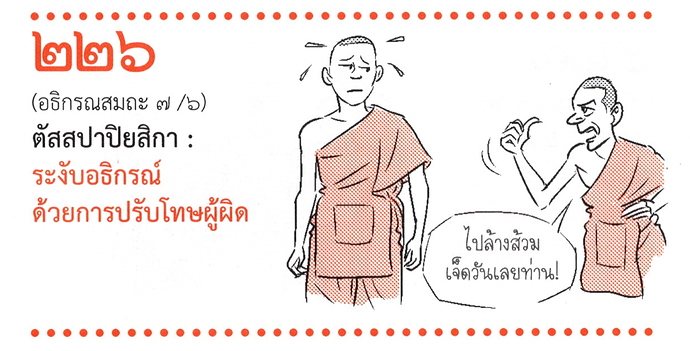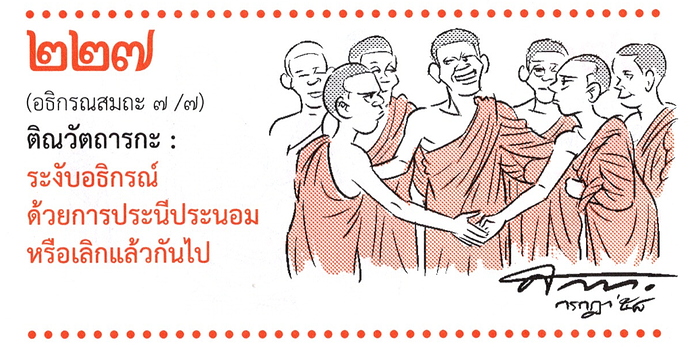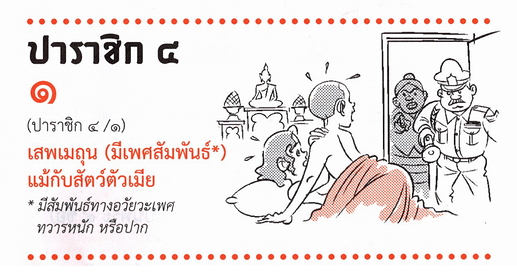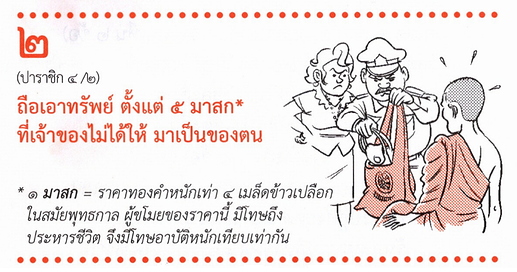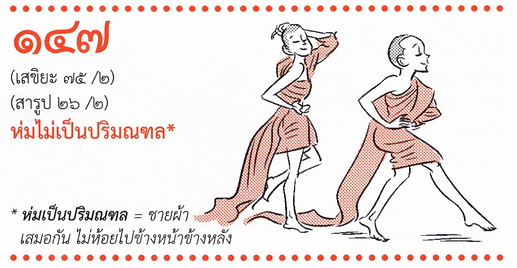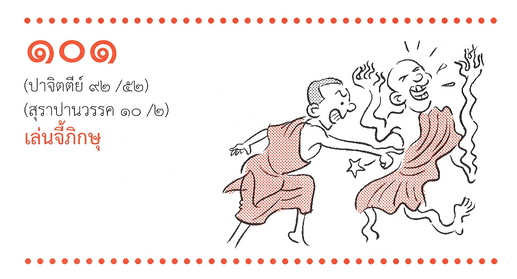I’m sure I speak on behalf of the tavatimsa devas, the yama devas, the tusita devas and so on, when cheering and offering thanks for this glorious gift you’ve given to the community!
Maybe on behalf of one or other human being too… ![]()
Dear Yodha… 
Just housekeeping … Let me know if you’d like the Mods to close this thread or not?
I’m happy to close it in a week or so, if you’d like, to give everyone a chance to comment, Just let us know 
Thanks for asking. ![]()
Maybe it’s best to still keep it open a little. Then I can post the PDF at some point.
Yes let’s please keep this open. People might wish to discuss approved usage of this wonderful content. For example, it just occurred to me that making a T-shirt with one of these would require attribution and permission.
![]()
Warm greetings Ven @yodha ,
I am wondering why Pacittiya 22 for bhikkhunis is not paired with Pacittiya 91 for bhikkhus.
With kind care,
Ayya Niyyanika
The English Bhikkhuni Patimokkha based on Ajahn Ṭhānissaro’s work used by many Western Bhikkhunis gives the Bhikkhu Rule #41 as being very close to Bhikkhuni Rule #46.
In the bhikkhu rule, they are not supposed to give food directly to a naked ascetic or to a male wanderer or to a female wanderer (acelakassa vā paribbājakassa vā paribbājikāya vā).
In the bhikkhuni rule, they are not supposed to give food directly to a householder, a male wanderer, or a female wanderer (agārikassa vā paribbājakassa vā paribbājikāya vā).
There are separate backstories for the rules. In the bhikkhu story Ananda was giving food to female wanders and naked asthetics. In the bhikkhuni story Thullananda was giving food to entertainers.
Somehow the naked aesthetics part didn’t make it into the bhikkhuni rule, although the male and female wanderers did, and the lay people don’t seem covered in the bhikkhu rule.
Should these two rules be grouped for the purpose of study and learning the shared offenses?
I agree that bi pc 22 and bu 91; and bi pc 46 and bu pc 41 are related. In the doodles, I also use the same/similar images to make the connection clear.
But it’s not up to me to decide on the shared rules. These classifications go back to the Buddha’s (or the early sangha’s) time. Usually, shared rules have to be the exact same wording for both bhikkhus and bhikkhunīs, which is not the case in the two rules you mention. The only exception to that is pārājika 1, which is considered a shared rule but has a different wording.
As you mention, the two rules have their own explanation in the bhikkhunī vibhaṅga. Therefore, they could be studied together with the corresponding bhikkhu rule, but it’s not really necessary. Ultimately, the specifications given in the bhikkhunī vibhaṅga apply (word definitions, non-offenses. etc.), not the ones in the bhikkhu rule.
And especially the bathing cloth (bu 91 / bi 22) is really not that similar. The bhikkhus’ cloth is much bigger, and only used during the rainy season for “bathing in the rain”, while nuns wear theirs while bathing in lakes / rivers, etc all year round.
It also depends if you are looking at the issue from a Theravada viewpoint or an EBT / pan-sectarian one. In some other vinayas, these rules are classified as shared. Then the bhikkhunīs don’t have their own vibhaṅga and the rules have to be studied together with the bhikkhu rules.
Also, with regard to pārājika 1, which is technically a shared rule in all vinayas, some bhikkhunī vinayas give it it’s own vibhaṅga. So the early sangha recognized that it was not fully shared, and was considered a special case that doesn’t properly fit the shared / unshared binary classification scheme.
For the two pācittiyas you point out, this is not the case. They are either considered as fully shared, or fully unshared, depending on the school affiliation.
Thanks for the reply.
It is helpful to formalize the meaning of shared offense:
Perhaps a definition we could use for “shared offense” is an offense that only appears in the bhikkhu vibhaṅga and not in the bhikkhunī vibhaṅga, but appears in both patimokkhas, although potentially with slightly different wording.
I also agree that pārājikā 1 is unique in that the factors for breaking the rule differ between the bhikkhu and bhikkhunī versions of this “shared offense.”
The text from the forward of the fourth edition of the Bhikkhunī Pātimokkha booklet based on the translation by Ṭhānissaro Bhikkhu says:
When the bhikkhunī rule is the same as a corresponding bhikkhu rule, the number of the bhikkhu rule was added in [ brackets ] at the end of the English translation. If the corresponding bhikkhu rule is similar but not exact, the word [ See … ] was added before the rule number or Khandhaka reference ( Mv for the Mahāvagga and Cv for the Cullavagga ).
I was basing “sameness” rating on that, but now want to dig deeper.
I’m shortly going offline for 25 days seclusion, but will comb through the pācittiyās when I emerge to highlight which rules are currently marked as “same” , that perhaps should be noted as [see … ref].
Thanks.
It’s really easy to identify the shared rules as they are all grouped together in the bhikkhunī pātimokkha. In the Pāli tradition, the bhikkhunīs have the unshared pācittiyas first (rules 1-96), and the shared pācittiyas afterwards (rules 97-166). So if any rule of the first 96 is marked as “same” in your documents, it is not really a shared rule and should be changed to “see…ref”.
Have a good retreat! ![]()
Ah, user error on my part. When I moved the Bhikkhuni Patimokkha into a spreadsheet so I could script over it, I “shortcut” and took out the words “see …” leaving only the bhikkhu rule number. Glad to see the base work of Ajahn Ṭhānissaro and the bhikkhunis who put the book together is fine as it is.
Thank you Ven Yodha for all your Vinaya doodle work. I’ve downloaded the full kit-and-kadoodle and will be integrating them, along with other monastics interested in this, into the bhikkhuni version of the Patimokkha Manual along the lines of what Ajahn Brahmali did for the bhikkhu’s rules.
But first, off to seclusion.
Sending metta,
Ayya Niyyānikā
During a recent short stay in a mountain kuṭi in Maehongson I came across a small collection of books that had been left behind by previous thudong monk visitors. To my surprise, one of them was a cartoon edition of the Bhikkhupātimokkha. Though not as colourful as Yodha’s work, this is how the cartoonist depicted the adhikaraṇa-samathas. I particularly liked the third.
1. To settle matters “in the presence”.
2. To settle matters by mindfulness.
3. To settle matters by past insanity.
4. To settle matters according to acknowledgement.
5. Majority decision.
6. To act on the accused’s further misconduct.
7. Covering with grass.
One doesn’t have to be able to read Thai, or be ordained, to learn from these. They’re wonderful.
But I am curious about how covering with grass works?
It’s basically a procedure that allows the sangha to avoid making a mountain out of a molehill. It can only be used to settle a limited range of issues and never for weighty ones. For example, it couldn’t be used to resolve accusations involving this sort of thing:
But might be invoked in relatively trifling matters like these:
From Ajahn Thanissaro’s Buddhist Monastic Code:
7. Covering over as with grass.
This refers to situations in which both sides of a dispute realize that, in the course of their dispute, they have done much that is unworthy of a contemplative. If they were to deal with one another for their offenses, the result would be greater divisiveness, even to the point of schism. Thus if both sides agree, all the bhikkhus gather in one place. (According to the Commentary, this means that all bhikkhus in the territory must attend. No one should send his consent, and even sick bhikkhus must go.) A motion is made to the entire group that this procedure will be followed. One member of each side then makes a formal motion to the members of his faction that he will make a confession for them. When both sides are ready, the representative of each side addresses the entire group and makes the blanket confession, using the form of a motion and one announcement (ñattidutiyakamma).
This clears all offenses except for —
- any grave fault (pārājika or saṅghādisesa offense, says the Commentary) committed by anyone in the group;
- any offenses dealing with the laity;
- any offenses of any member of either side who does not approve of the procedure; and
- any offenses of any bhikkhu who does not attend the meeting. (This is the reason for the Commentary’s statement that even sick bhikkhus must attend.) (Cv.IV.13.4)
Point (3) here is interesting. If any member of either side were to dissent, that would invalidate the whole procedure. This point is thus probably added as a reminder to any bhikkhu who might be vindictive enough to want to deal with his enemies case-by-case, that his offenses will have to be dealt with case-by-case as well. This might be enough to discourage him from dissenting.
The Commentary explains the name of this procedure by comparing the offenses cleared in this way to excrement that has been so thoroughly covered with grass that it can no longer send an oppressive smell.
According to Cv.IV.14 — sections 16, 27, 30, and 34 — the principle of “in the presence of” applies to all four types of issues: dispute-issues, accusation-issues, offense-issues, and duty-issues. In addition, dispute-issues must be settled “in accordance with the majority”; accusation-issues, either by a verdict of mindfulness, a verdict of past insanity, or an act of further punishment; and offense-issues, by acting in accordance with what is admitted or by covering them over as with grass.



